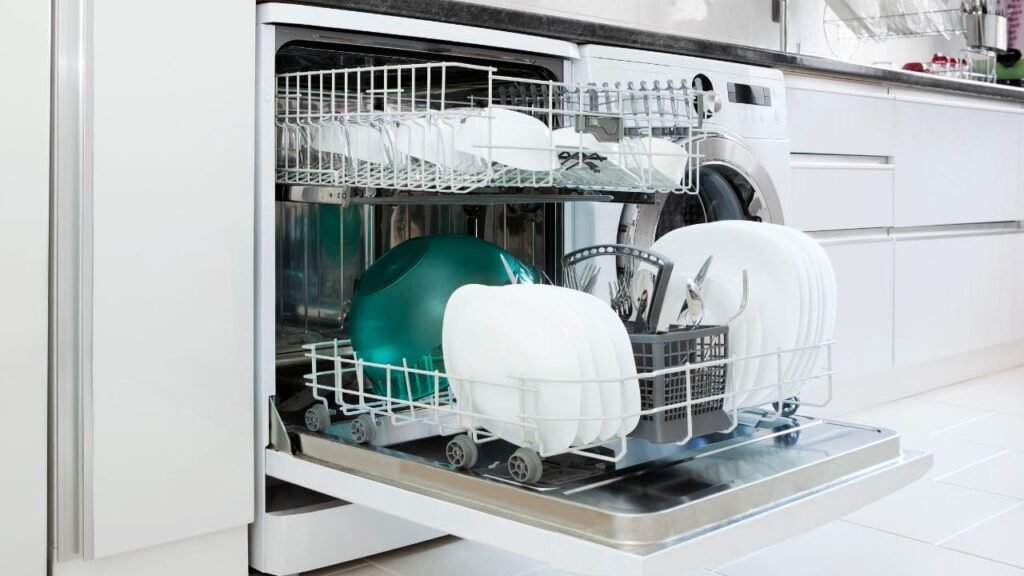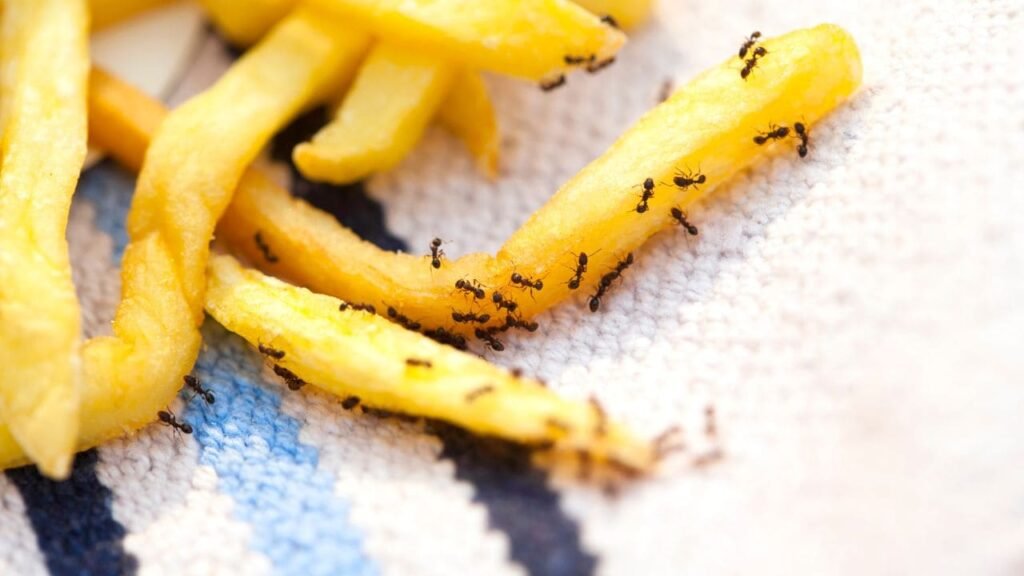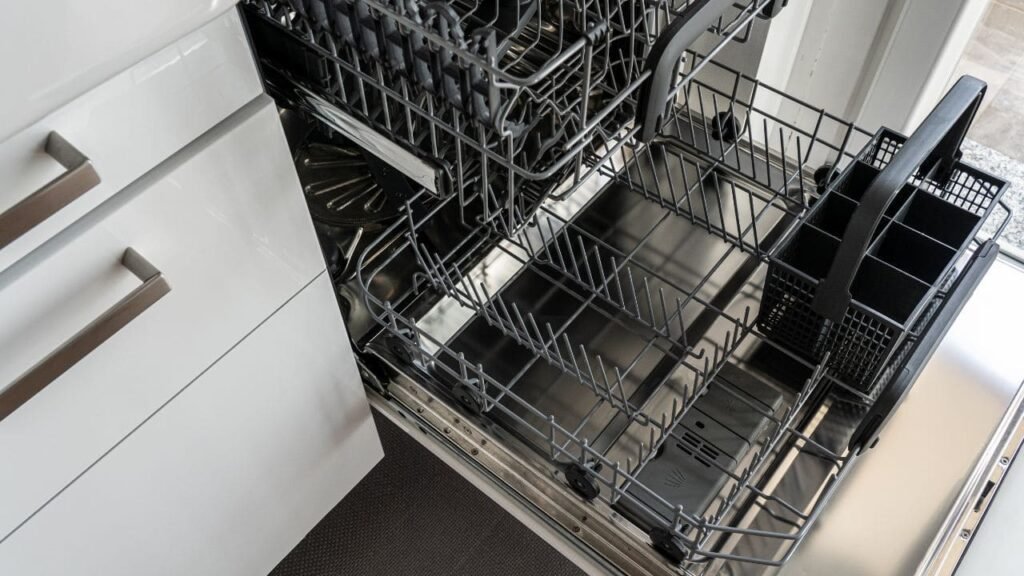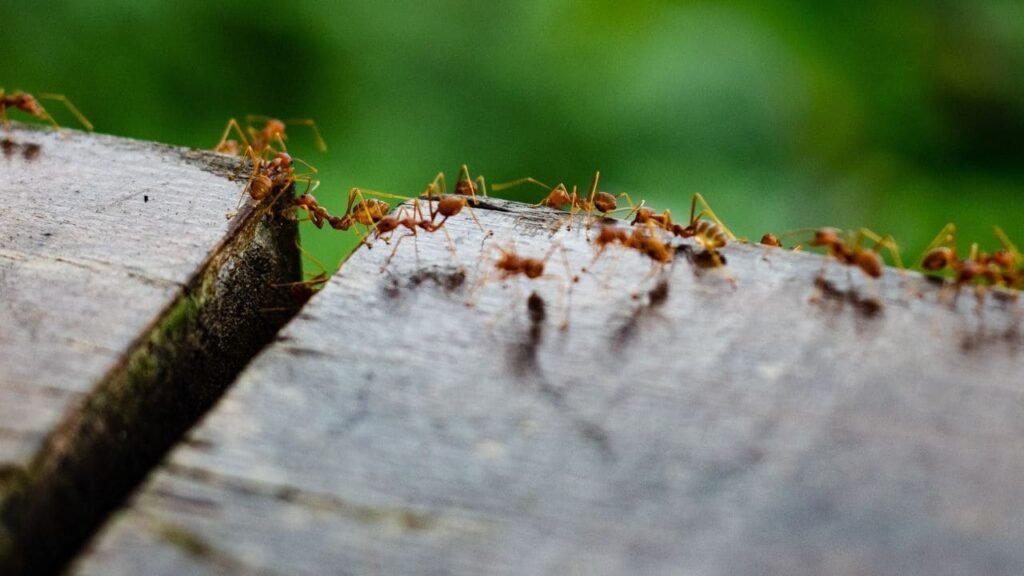


We’ve all experienced that gut response of surprise when opening the dishwasher expecting cleanly washed dishes but instead discovering an ant infestation taking over the interior. As unsettling as it seems, ants can find their way inside our appliances like dishwashers in search of food and water sources. Getting rid of these ants in your dishwasher as soon as possible is key before the problem escalates and gets out of hand.
In this comprehensive blog post, I’ll walk you step-by-step through understanding why ants are attracted to dishwashers, preventative maintenance tips to deter future ant incursions, How to Get Rid of Ants in Dishwasher or colony living inside, and pro tips to keep ants from returning or coming back after eliminating them once. With some diligent troubleshooting tactics and proven pest control methods, you can quickly reclaim a sparkling clean, ant-free dishwasher environment.
Ants are resourceful little insects and your dishwasher offers a few key things they’re looking for:
Understanding exactly why ants are trying to move in can help you troubleshoot and block the infestation at the source.
Next I’ll go over why it’s so important to take care of ant invasions as soon as possible. Leaving them alone can compound issues over time.
Seeing a swarm of ants crawling around your dishwasher can obviously be upsetting and disgusting. But beyond just the creepy factor, leaving an ant infestation unchecked can lead to further problems:
Stopping ants quickly prevents contamination risks and further infestation issues. Checking under and around your dishwasher is the next logical troubleshooting step.

Ants don’t materialize out of thin air inside your appliances. There are access points where they enter from the surrounding environment. Carefully inspect under and around your dishwasher for potential cracks and gaps ants could be using:
Finding where and how ants are entering allows you to literally close off their access by sealing holes and gaps. But there still could be an active swarm inside to eliminate first.
Okay, time to walk through pro tips and homemade remedies for getting rid of ants living in your dishwasher once and for all!
| Ant Species | Identifying Traits | Behaviors | Nesting Areas |
|---|---|---|---|
| Carpenter Ants | Large, black ants up to 3/8” long | Burrow into and nest in damp wood; ant trails visible | Dead trees, landscaping mulch, structural timbers |
| Argentine Ants | Very small dark brown ants up to 1/8” long | Thousands per colony swarm food; love sweets | Soil, potted plants, gaps in exterior walls |
| Pharaoh Ants | Yellowish-red tiny ants 1/16” long | Nests have multiple queens and rapidly multiply | Kitchen counters, bathrooms, appliances, wall voids |
| Odorous House Ants | Brown or black ants 1/8”–1/4″ long | Strong rotten coconut odor when crushed | Outdoors in soil, leaf litter; indoors in walls near moisture |
Ant killer sprays or liquid baits formulated specifically for indoor kitchen use can be highly effective solutions:
I don’t recommend using outdoor or more heavy duty pesticides internally or near kitchen surfaces, as the fumes or residues could contaminate dishes or countertops later.
Using contained, commercial ant killer chemicals also minimizes the mess versus some homemade applications I’ll cover next. While still effective, vinegar, boric acid or Borax solutions tend to require more effort to implement and clean up after use.
White vinegar is a natural home remedy you likely already have in your pantry. Thanks to its acidic pH level, vinegar dissolves grease and also kills ants on contact.
Running dishwasher cycles with heated vinegar both sanitizes the interior and poisons ants simultaneously. The steps are simple:
The nice thing about this method is the vinegar wash also breaks up any built up grease, limescale or soap scum hiding out inside your dishwasher hoses, pump and lines – leaving everything sparkling!
Now let’s explore a homemade bait option using Borax and sugar.

This tactic revolves around tempting ants with a sweet treat that secretly contains deadly Borax as the secret ingredient.
Borax is a natural mineral powder typically used as a laundry booster. But when ants ingest it, they die shortly after returning the tainted food source to feed their colony. Here’s how to put this delayed reaction takedown into action:
This affordable kitchen pantry method avoids directly handling pesticides or having to scrub down the dishwasher again afterwards like liquid sprays or vinegar washing necessitate. So there’s definitely advantages for an indirect approach letting the ants do themselves in!
Now let’s look at adjusting appliance settings and sealing up access points.
Cranking up your dishwasher’s normal operating temperature is an easy internal adjustment that can kill ants with heat while also improving sanitization:
Now let’s make sure cleaned dishes stay that way after unloading.

Once underlying nests and ant colonies are handled, take preventative steps to seal up vulnerabilities around your appliance perimeter. Ants persistently search for access, so blocking them is key:
Now that access points are locked down, let’s shift gears and talk about how better day to day habits keep ants away for good.
| Method | Pros | Cons |
|---|---|---|
| Ant Killer Sprays/Baits | Effective poisons, some formulations safe for kitchen areas, limited cleaning after use | Chemical/pesticide concerns for some people, possible ventilation needed to avoid contamination |
| Vinegar Wash | Non-toxic option, dissolves build-up, safe for kitchen areas | Labor intensive prep and cleanup, need to take care of entry points separately |
| Borax & Sugar | Very affordable, avoids pesticide chemicals | More time consuming than sprays, some mess cleaning it up after |
| Adjusting Temperature | Utilizes built-in appliance function, enhances sanitization | Increases electricity usage and wear on unit over time, limited compatible models |
| Sealing Cracks & Holes | Stops ants at the access source, wide DIY sealing options | Can involve some work sealing Numerous gaps and openings |
Altering some usage patterns, cleaning regimen and maintenance practices helps prevent future ant invasions after eliminating existing swarms:
Staying vigilant with monitoring for new ant trails, nurturing better loading and cleaning habits, and getting leaks fixed quickly goes a long towards prevention. But adverse ant problems can still crop up. Here’s when calling an extermination professional makes most sense.
While several effective home treatment options exist for ant infestations inside your dishwasher and around kitchen areas, severe cases may require bringing in an expert:
When ants persistently return and multiply despite your best solo efforts, bring in an expert!
Dealing with ants roaming around your dishwasher is admittedly creepy and concerning if contamination worries set in. But a bit of diligent inspection and sealing paired with vinegar cleaning, baits or adjusting heat cycles can typically remedy common ant incursions relatively quickly.
Implement preventative better loading and maintenance habits afterwards plus continue monitoring closely for new ant trails. Taking swift action when only a few scout ants first appear keeps infestations contained. But if ants return in full force or carpenter ant wood damage appears, don’t hesitate reaching out to a pest control specialist.
I hope these comprehensive tips give you confidence in reclaiming an ant-free dishwasher using safe, affordable home methods. Let me know if any sections need more detail or clarification! I’m happy to chat more about specific ant elimination strategies or prevention recommendations in the comments.
How do ants actually get inside a dishwasher?
Ants enter dishwashers through small cracks or gaps in the exterior housing, hoses, wiring conduits or along the door seals. Common access points are cracks in walls or baseboards next to the appliance, gaps around plumbing lines, or warped door seals. Once a few scout ants discover a water or food source inside and leave pheromone trails, other ants will soon follow.
Can ants damage the dishwasher or parts inside?
Ant nests built inside the pump, motor or control module using debris and biological material carried in can lead to clogged valves, electrical shorts or water leaks over time. Ants may also chew through interior wiring. So while ants themselves cause minimal direct damage, their nesting behaviors and trails introduce damaging secondary side effects if not addressed.
What’s the quickest way to get rid of ants – sprays or homemade remedies?
The fastest way to kill off ants is by using targeted ant killer sprays or baits formulated specifically for indoor kitchen use. The active insecticidal ingredients in these commercial chemicals kill ants on contact or by ingestion much quicker than homemade solutions…though sprays do require wiping out any visible residue afterwards. Vinegar, Borax powder or boric acid solutions take longer to work but avoid chemicals.
How do you keep ants from coming back after removing them initially?
Prevent future ant incursions by sealing all identified cracks, holes and gaps leading into the dishwasher cavity thoroughly with waterproof caulk and maintaining diligent cleaning habits. Keep the interior dry between cycles, immediately fix any leaks, and wipe down surfaces regularly to eliminate water or food residue buildup. Also address ant mounds or nesting areas found outside near the home’s foundation.
When is a pest control expert required to fully eliminate an ant infestation?
Severe ant invasions involving carpenter ants damaging property, Argentine ants blanketing entire rooms, or certain tenacious species may require professional extermination methods and commercial grade insecticides or baits to halt multiplication and completely decimate colonies. Multi-unit or enclosed community infestations also call for coordinated pest control across neighboring residences simultaneously.